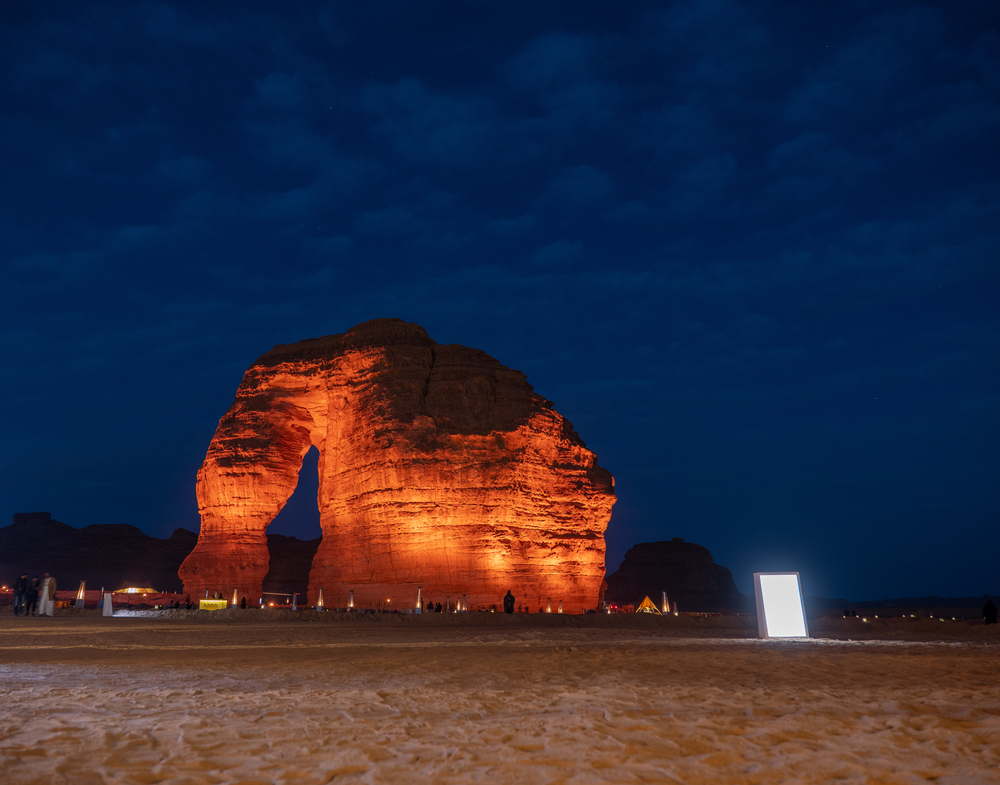RIYADH: Saudi Arabia’s startup ecosystem is undergoing a remarkable transformation, driven by increasingly attractive valuations and a surge in early-stage investment activity.
The Kingdom is establishing itself as a leader in venture capital funding across the Middle East and North Africa region, with government-backed initiatives, economic reforms, and digital transformation playing pivotal roles.
As valuations – once inflated by significant capital inflows – adjust to more reasonable levels, early-stage rounds are becoming particularly appealing to both regional and international investors.
In the first half of the year, 84 percent of total transactions in Saudi Arabia came from early-stage investments, a rise from 82 percent on the previous 12 months, with series A transactions increasing to 14 percent from 10 percent, according to venture data platform MAGNiTT.
The current state of valuations
In an interview with Arab News, Tushar Singhvi, deputy CEO at Crescent Enterprises, said that the current state of valuations in Saudi Arabia reflects a “dynamic period of growth.”
He acknowledged that while some valuations had become “excessively high” due to the substantial influx of venture capital, they have since moderated, offering more “reasonable levels,” which in turn create “attractive opportunities for investors.”
The executive added: “Although some valuations might still appear inflated, the strong underlying fundamentals and significant growth potential of these businesses justify these prices.”

Tushar Singhvi, deputy CEO at Crescent Enterprises. (Supplied)
Saudi Arabia led the MENA region in venture capital funding during the first half of 2024, with a total of $412 million, Singhvi highlighted.
“Additionally, foreign investments in Saudi Arabia rose by 12 percent year-on-year to $640 billion by the end of 2023, highlighting sustained investor confidence,” he added.
In agreement, Bundeep Singh Rangar, CEO of Fineqia and managing partner of Glass Ventures, emphasized that Saudi Arabia’s startup ecosystem is showing resilience.
“While the broader MENA region has seen a decline in venture capital funding, Saudi Arabia’s ecosystem remains resilient,” he said, noting that even with a slight year-on-year dip in funding, investor confidence remains high, particularly in sectors like fintech and e-commerce.
Rangar explained that the maturation of the Saudi startup ecosystem is increasingly aligning with “global standards,” making the valuations justifiable as the market sentiment continues to strengthen.
Underlying factors
Several key factors have driven investors’ increased interest in early-stage rounds in Saudi Arabia. Singhvi points to the Kingdom’s “vast market potential” supported by Vision 2030, which has catalyzed a wave of innovation and entrepreneurship.
Significant government support, such as initiatives from Monsha’at and the Public Investment Fund, have played a crucial role, while infrastructure spending has created new opportunities across multiple sectors.
“The ongoing digital transformation in the Kingdom has further enhanced its attractiveness,” Singhvi remarked, adding that digitally enabled businesses are well-positioned to capture the growth opportunities emerging from this transformation.

Bundeep Singh Rangar, CEO of Fineqia and managing partner of Glass Ventures. (Suppied)
Rangar also highlights the impact of Vision 2030, noting that the government’s proactive efforts, including initiatives like the LEAP conference where billions are being invested in tech, are creating fertile ground for early-stage investments.
He said: “The growing demand for technology-driven solutions in sectors like fintech, coupled with an 83 percent year-on-year rise in non-mega funding, makes early-stage investments particularly attractive to both local and international investors.”
Singhvi also stated that investor participation has grown significantly, with Saudi Arabia accounting for 54 percent of MENA’s total venture capital funding in the first half of the year, up from 38 percent in 2023.
Valuations and M&A
One significant outcome of these more attractive valuations is the potential for increased mergers and acquisitions activity within Saudi Arabia’s startup ecosystem.
Singhvi predicts “unprecedented growth” in the M&A market, noting that Saudi Arabia led the Middle East in M&A activity in the first quarter of 2024 and is projected to reach a transaction value of $4.8 billion by year-end.
“The startup sector is expected to see similar positive activity, with more realistic valuations making them more appealing to potential investors,” he remarked.
Rangar concurs, explaining that as valuations become more aligned with market norms, mature startups are likely to consolidate their positions and scale via strategic acquisitions.
He cited RasMal’s recent acquisition of UAE’s Pentugram as an example of how favorable valuations can facilitate cross-border deals that strengthen the regional influence of Saudi startups.
Future outlook
The trend of appealing early-stage rounds is likely to continue, according to both Singhvi and Rangar.
Singhvi emphasized that Saudi Arabia’s commitment to Vision 2030 creates a “stable and supportive environment for startups,” particularly in key sectors like fintech, e-commerce, health tech, ed tech, and renewable energy, which are expected to continue attracting significant investment.
He pointed to the Kingdom’s economic stability and the net inflow of foreign direct investments, worth $3.49 billion in the last quarter of 2023, as further reinforcing investor confidence.
Rangar also pointed out that rising investor participation – up 16 percent in the first half of 2024 – reflects a robust appetite for early-stage investments and suggests this trend will persist, supported by continued government backing and the availability of capital.
Optimism amongst investors
Positivity about the future of Saudi Arabia’s startup ecosystem is shared widely among investors, according to both Singhvi and Rangar.
“There is strong optimism about the future of the Saudi startup ecosystem among investors,” Singhvi said, highlighting the growing sophistication of the ecosystem.
The rise of corporate venture capital, with large corporations investing in startups for innovation, has been a major factor, offering funds, mentorship, and industry expertise.
The increasing alignment of valuations with market fundamentals is further contributing to this optimism.
“Investors are particularly encouraged by the growth potential in sectors like fintech, e-commerce, and digital transformation, which are expected to continue attracting significant capital,” Rangar added, noting that Saudi startups’ resilience amid regional challenges reinforces this positive outlook.
Saudi Arabia’s leading position
Comparatively, Saudi Arabia is surpassing other MENA markets such as the UAE and Egypt in terms of venture capital funding.
“It has more than 8,400 startups, of which two have already become unicorns – startups with a valuation exceeding $1 billion – namely stc pay and Tamara. While the UAE remains a strong competitor with a higher number of transactions, the gap in funding between the two has widened, with Saudi Arabia securing a larger share of the region’s total funding,” Rangar said.
“The Kingdom’s focus on high-growth sectors and the support from initiatives like the Saudi Unicorns program have positioned it as a rising star in the global startup ecosystem, setting it apart from its regional counterparts,” he added.
Crescent Enterprises, for its part, sees the Saudi market as a hub of significant opportunity. Singhvi explained that the firm is actively exploring investment opportunities across sectors and has already established a strong presence in the Kingdom.
Companies like Gulftainer Group, which manages terminals in Jubail, and Momentum Logistics, which operates a logistics hub in Dammam, are part of Crescent’s portfolio.
He also mentioned several portfolio companies that already have significant presence in Saudi Arabia, such as Kitopi, a cloud-based smart kitchen operator, and Transcorp, a temperature-controlled last-mile delivery service provider.
Looking ahead, Singhvi said: “We aim to deepen our presence in Saudi Arabia by investing in innovative startups and established businesses that align with our vision of sustainable growth and development.”
He mentioned that portfolio startups like BreakBread, a digital marketplace, and FreshToHome, a food tech company, are also planning to expand their operations into Saudi Arabia, signaling further growth potential.






























